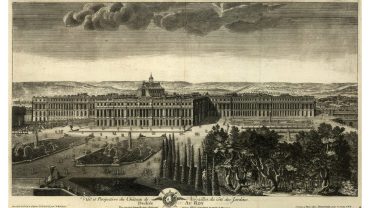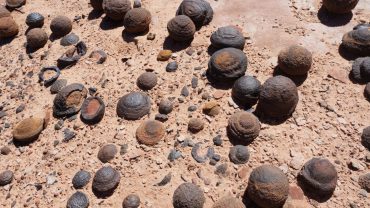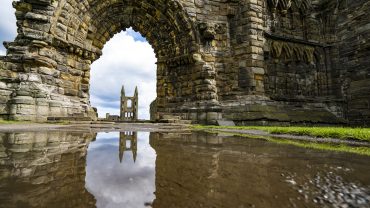On Valentine’s Day in 1981, 12-year-old Todd Domboski was playing in his grandmother’s garden in Centralia, Pennsylvania when the ground opened up. And swallowed him whole. Making a desperate grab for some exposed tree roots, Todd managed to cling on until his cousin arrived, pulling him to safety. The boy survived to tell his harrowing tale, but the story was far from over. Because this was no freak accident; it was a stark symptom of an invisible disaster; an underground fire that had been stealthily consuming the town from beneath for nearly two decades.
It would come to be known as the Centralia Mine Fire, one of the worst fires in US history. And, while the town is long gone, the fire still burns strong today. But how did this happen? What caused the Centralia fire? And what makes it so hard to extinguish? Read on to find out.
What Caused the Centralia Fire?

Illustration of an anthracite coal mine in Pennsylvania (Credit: ilbusca via Getty Images)
Centralia was established in the mid-1800s, its destiny intertwined with the rich anthracite coal deposits of eastern Pennsylvania. The town blossomed as coal mining became its economic backbone, attracting a workforce and their families. However, by the 1950s, the dominance of coal began to fade, overtaken by the rise of the oil and gas industries. Most of the anthracite mines were abandoned, leaving behind a maze of tunnels and exposed coal seams. These remnants created the perfect conditions for the disaster that would become the Centralia underground coal fire.
The Spark That Ignited the Inferno

Did smouldering embers ignite the Centralia coal fire? (Credit: Samet Guler via Getty Images)
There’s no official explanation as to what caused the Centralia fire. In fact, given the vast expanse of tunnels and its hidden environment, nobody can even be sure when or where it started. Some have argued that it was the continuation of a neighbouring fire. However, the most widely accepted consensus is that it began on 27th May 1962.
That day, Centralia sanitation workers ignited a fire at a landfill located over an old mine entrance. At the time, using abandoned mines as landfills was a common practice. As was burning the rubbish. Having completed the task, they extinguished the blaze. However, it’s believed some smouldering embers may have remained unnoticed after the fire was extinguished. Due to the landfill probably lacking proper lining, these embers were likely able to penetrate into the underlying mining tunnels, igniting the coal seams. This oversight is believed to have ignited the Centralia coal fire, which was first reported two days later. From there, it would grow into one of the most infamous Pennsylvania mine fires.
The Centralia Underground Fire: An Unseen Threat

The fire spread quickly and silently (Credit: ANGHI via Getty Images)
The network of coal seams beneath Centralia allowed the fire to spread rapidly. Burning as deep as 300 feet below the surface, the Centralia underground fire was fuelled by vast deposits of anthracite coal and supplied with oxygen through the interconnected tunnels. Initially, residents noticed only occasional wisps of smoke or odd smells. However, as months passed, smoke began rising from the ground more frequently, plants began to die, and the air became thick with the smell of sulphur. The Pennsylvania coal fire had transformed into a growing menace, creeping beneath the very foundations of the town.
Attempts to Extinguish the Blaze

Flooding the mines didn't work (Credit: Vladimir Zapletin via Getty Images)
Between 1962 and 1978, state and federal authorities spent millions of dollars trying to put out the Centralia underground coal fire, but none of the methods succeeded. Several strategies were attempted:
Trenching
Crews tried to dig trenches to create a barrier against the fire, but the Centralia fire spread faster than the excavation work could keep up.
Flushing
Engineers drilled holes into the ground and poured in materials like sand and gravel to cut off the fire’s oxygen supply. However, these methods were ineffective because the high heat burned away the materials, leaving gaps for the fire to continue.
Boreholes & Barriers
Boreholes were drilled to assess the fire’s progress, and trenches were dug to block its path. Yet, by the time trenches were completed, the Centralia underground fire had already moved beyond them.
Other more ambitious ideas, such as flooding the mines or excavating a vast pit, were deemed impractical or too expensive, with some proposals estimated to cost over six hundred million dollars.
The Town's Evacuation and Decline

Most residents abandoned their homes (Credit: Jan Hakan Dahlstrom via Getty Images)
By the early 1980s, it was clear that the Centralia coal fire posed a serious threat. Dangerous gases such as carbon monoxide were seeping into homes, and the ground itself had become unstable. The near-tragic event involving Todd Domboski highlighted the immediate danger to residents.
In 1984, Congress provided forty-two million dollars to fund the relocation of Centralia’s residents. Many families accepted the government’s buyout offers, leaving behind their homes, which were later demolished. However, a small number of residents refused to leave, clinging to the community they had known all their lives. In 1992, Pennsylvania declared eminent domain over all property in Centralia, and the town was condemned.
Centralia Underground Fire: The Ongoing Aftermath

Graffiti Highway, Centralia (Credit: Thom Lang via Getty Images)
Today, Centralia is a desolate place, its former residents long gone, and only a few individuals remain. Nature has reclaimed much of the area, with roads cracked and overgrown, and the few remaining structures standing as silent witnesses to the town’s decline.
One of the most famous remnants of Centralia was the Graffiti Highway, a section of Route 61 that had bisected the town and was covered in artwork by visitors. In 2020, the road was concealed with dirt to prevent further trespassing.
Smoke and steam still rise from cracks in the ground. What’s more, experts believe that the Centralia Mine Fire is nowhere near over. Indeed, it may continue to burn for another 250 years, slowly consuming millions of tonnes of coal beneath the surface.
Global Coal Seam Fires

Coal seam fires are incredibly hard to control (Credit: Tetra Images via Getty Images)
Centralia’s story, while dramatic, is not unique. In fact, it’s not even the only Pennsylvania coal fire. Coal seam fires occur when underground coal deposits ignite, often due to human activities like mining, which expose coal to oxygen. Natural events, such as lightning strikes or spontaneous combustion, can also trigger these fires. Once ignited, coal seam fires are notoriously difficult to control, and their subterranean location allows them to burn undetected for long periods.
At any given time, hundreds – possibly thousands – of coal seam fires are burning across the globe. The United States, with its vast coal reserves, has many underground fires, with Pennsylvania having the highest number of coal seam fires. China, the largest coal producer, experiences the greatest number of these fires worldwide, while India has the highest density of coal seam fires. In Australia, the Burning Mountain coal seam fire has been burning for an estimated 6,000 years, making it the longest-burning fire in the world.
The Lasting Legacy of the Centralia Coal Fire

Centralia, a poignant reminder of a once thriving town (Credit: A Janick via Getty Images)
The Centralia Mine Fire serves as a stark reminder of the dangers posed by coal seam fires and their long-lasting consequences. Overall, the Centralia underground coal fire is a haunting example of how a small oversight can escalate into a disaster of epic proportions, displacing communities and leaving an indelible mark on the environment for centuries to come.












